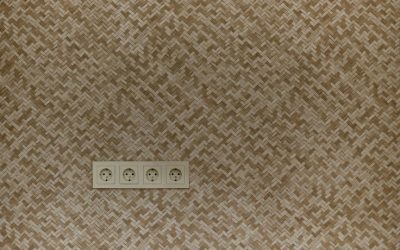Removing paint from carpet can be a daunting task, especially if the paint has already dried. However, with the right tools and techniques, it is possible to successfully remove paint from your carpet without causing damage.
One of the most important things to keep in mind when removing paint from carpet is to act quickly. The longer the paint sits on the carpet, the harder it will be to remove. As soon as you notice the paint spill, try to remove as much of it as possible using a clean cloth or paper towel.
There are several methods that can be used to remove paint from carpet, including using solvents, heat, and scraping. It is important to choose the right method based on the type of paint and the type of carpet you have. In the following sections, we will explore each of these methods in more detail and provide step-by-step instructions on how to remove paint from your carpet.
Understanding Paint Types
Water-Based Paints
Water-based paints, also known as latex paints, are popular for their ease of use, quick drying time, and low odour. They are commonly used for interior walls and ceilings, as well as for crafts and small projects. These paints are made with water-soluble resins and pigments, which make them easy to clean up with soap and water.
One advantage of water-based paints is that they come in a wide range of colours and finishes, including matte, satin, and glossy. They are also less likely to yellow over time compared to oil-based paints. However, they may not be as durable as oil-based paints and may require more coats to achieve full coverage.
Oil-Based Paints
Oil-based paints, also known as alkyd paints, are known for their durability and resistance to wear and tear. They are commonly used for exterior surfaces such as doors, trim, and shutters, as well as for furniture and cabinets. These paints are made with solvents and resins, which give them a longer drying time and a stronger odour.
One advantage of oil-based paints is that they provide a smoother and more even finish compared to water-based paints. They are also more resistant to moisture and stains, making them ideal for high-traffic areas. However, they may require special solvents for cleanup and may emit harmful fumes during application.
When removing paint from carpet, it is important to identify the type of paint used to determine the appropriate removal method. Water-based paints can often be removed with a mixture of warm water and dish soap, while oil-based paints may require a solvent such as mineral spirits or turpentine. It is always recommended to test any cleaning solution on a small, inconspicuous area of the carpet first to ensure it does not cause damage.
Preparation and Safety
Protecting the Work Area
Removing paint from carpet can be a messy process, so it is important to protect the surrounding area. Cover any nearby furniture, walls, and baseboards with plastic sheeting or drop cloths. This will prevent any accidental spills or splatters from damaging the surrounding surfaces. Additionally, it is recommended to wear gloves and protective eyewear to avoid any skin or eye irritation from the chemicals used in the paint removal process.
Gathering Necessary Materials
Before beginning the paint removal process, gather all necessary materials. This will ensure that the process runs smoothly and efficiently. Here is a list of materials that may be needed:
- Paint scraper or putty knife
- Paint thinner or solvent
- Clean white cloth or paper towels
- Carpet cleaning solution
- Bucket of warm water
- Scrub brush
- Vacuum cleaner
It is important to read the instructions on any chemicals used in the process and follow all safety precautions. Additionally, it is recommended to test any chemicals or solutions on a small, inconspicuous area of the carpet before proceeding with the full removal process. This will help to ensure that the carpet is not damaged or discoloured during the paint removal process.
Initial Paint Removal Techniques
Blotting the Stain
One of the first steps in removing paint from carpet is to blot the stain. This involves using a clean cloth or paper towel to gently blot the affected area. It is important to avoid rubbing the stain, as this can push the paint further into the carpet fibres and make it more difficult to remove.
To blot the stain, start by removing any excess paint using a scraper or spoon. Then, dampen a clean cloth or paper towel with warm water and gently blot the stain, working from the outside in. Repeat this process until the stain is no longer visible on the cloth.
Scraping Off Excess
Another initial technique for removing paint from carpet is to scrape off any excess paint. This is particularly useful for larger paint spills or drips. To do this, use a scraper or spoon to carefully scrape away as much of the paint as possible.
It is important to be gentle when scraping the paint, as you do not want to damage the carpet fibres. Once you have removed as much of the excess paint as possible, you can then move on to other paint removal techniques.
Overall, blotting and scraping are two effective initial techniques for removing paint from a carpet. By taking these steps, you can help to minimize the damage to your carpet and make it easier to remove the paint completely.
Chemical Solutions and Solvents
Applying Solvents
When it comes to removing paint from carpets, solvents can be very effective. However, it is important to use them with caution and in a well-ventilated area. Here are a few solvents that can be used:
- Mineral spirits: This solvent is effective in removing oil-based paint. Apply a small amount to a clean cloth and blot the affected area. Repeat until the paint is removed.
- Acetone: Acetone is effective in removing latex paint. Apply a small amount to a clean cloth and blot the affected area. Repeat until the paint is removed.
- Paint thinner: This solvent can be used to remove both oil-based and latex paint. Apply a small amount to a clean cloth and blot the affected area. Repeat until the paint is removed.
Homemade Remedies
If you prefer to use natural remedies, there are a few options available. Here are a few homemade remedies that can be used to remove paint from carpet:
- Vinegar and baking soda: Mix equal parts vinegar and baking soda to create a paste. Apply the paste to the affected area and let it sit for a few minutes. Use a clean cloth to blot the area until the paint is removed.
- Rubbing alcohol: Apply rubbing alcohol to a clean cloth and blot the affected area. Repeat until the paint is removed.
- Dish soap and hot water: Mix a few drops of dish soap with hot water. Apply the solution to the affected area and let it sit for a few minutes. Use a clean cloth to blot the area until the paint is removed.
Remember to always test the solution on a small, inconspicuous area of the carpet before applying it to the affected area. This will help ensure that the solution does not cause any damage to the carpet.
Deep Cleaning the Carpet
Using Carpet Cleaners
When it comes to deep cleaning a carpet, using a carpet cleaner is a great option. Carpet cleaners use a combination of water and cleaning solutions to penetrate deep into the carpet fibres and remove stubborn stains and dirt.
Before using a carpet cleaner, it is important to vacuum the carpet thoroughly to remove any loose dirt and debris. Then, follow the manufacturer’s instructions for mixing the cleaning solution and filling the machine’s tank.
When using a carpet cleaner, it is important to work in small sections and make multiple passes over each section to ensure thorough cleaning. After cleaning, it is important to allow the carpet to dry completely before walking on it.
Steam Cleaning
Another effective method for deep cleaning a carpet is steam cleaning. Steam cleaning uses hot water and steam to penetrate deep into the carpet fibres and remove dirt and stains.
To steam clean a carpet, it is important to first vacuum the carpet thoroughly to remove any loose dirt and debris. Then, fill the steam cleaner’s tank with water and cleaning solution according to the manufacturer’s instructions.
When steam cleaning, it is important to work in small sections and make multiple passes over each section to ensure thorough cleaning. After cleaning, it is important to allow the carpet to dry completely before walking on it.
Overall, both carpet cleaners and steam cleaners can be effective for deep cleaning carpets. It is important to follow the manufacturer’s instructions and work in small sections to ensure thorough cleaning.
Post-Cleanup and Carpet Care
After successfully removing the paint from the carpet, it’s important to take the necessary steps to ensure the carpet stays clean and undamaged. Here are some tips to follow:
1. Blot the Area
After removing the paint, use a clean cloth or paper towel to blot the area dry. Avoid rubbing the area as this can damage the carpet fibers.
2. Vacuum the Carpet
Once the area is dry, vacuum the carpet to remove any remaining paint particles. This will also help to fluff up the carpet fibers.
3. Apply Carpet Cleaner
If there are any remaining stains, apply a carpet cleaner specifically designed for removing paint stains. Follow the instructions on the cleaner carefully and test it on a small, inconspicuous area of the carpet first to ensure it doesn’t cause any damage.
4. Rinse the Area
After applying the carpet cleaner, rinse the area thoroughly with clean water and blot dry with a clean cloth.
5. Prevent Future Stains
To prevent future paint stains, consider placing a protective covering over the carpet in areas where painting or other messy projects are taking place. This could be a plastic sheet or a drop cloth.
By following these simple steps, you can ensure your carpet stays clean and free of paint stains.




0 Comments